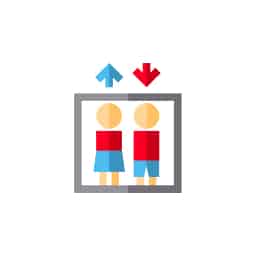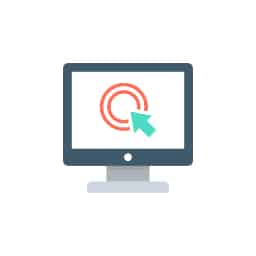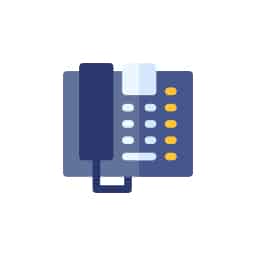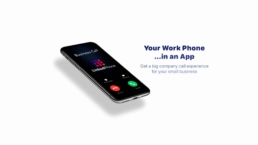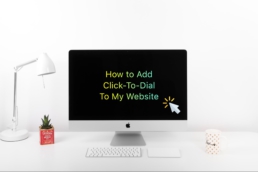10 Perfect Sales Pitch Examples You Can Use
Table of Contents
- What is a Sales Pitch?
- 10 Different Types of Sales Pitches
- Elements of a Successful Sales Pitch
- What NOT to Say in a Sales Pitch
- How to Deliver a Sales Pitch
- 10 Sales Pitch Examples You Can Use
- Pitching Tips & Tricks
- Creating Customer-Centric Pitches Built for Success
- Small Business Resources for Business & Personal Growth
What is a Sales Pitch?
A sales pitch is a line of dialogue, monologue, or written speech designed to persuade someone to purchase a product or service, or accept an idea. The primary goal of a sales pitch is to explain the benefits of a product or service in such a compelling way that the listener is convinced to make a purchase or take a desired action.
If you’ve ever felt the sweaty palms and rapid heartbeat of a make-or-break sales pitch, then you know how important it is to be prepared to deliver the perfect pitch in a moment’s notice. In today’s highly competitive business landscape, knowing how to write a sales pitch is an invaluable skill. A well-crafted sales pitch has the potential to captivate an audience, inspire action, and ultimately drive revenue. However, finding the right words and approach to engage potential customers can often be challenging.
Whether you’re a seasoned salesperson looking to refine your technique or a novice eager to learn the ropes, this guide will provide you with a few useful sales pitch examples and ideas, and equip you with the tools to know how to make a pitch that will elevate your sales game to new heights.
LinkedPhone serves the small business community with local & toll-free business numbers that work with your cell phone, desk phone, & laptop. Add a 2nd phone number to your cell phone with our mobile app. Talk & text with clients on the go. Add team members too. Finally break free from the desk phone. At LinkedPhone, freedom rings! 🔔📱💻☎️

What is a Sales Pitch?
A sales pitch is a line of dialogue, monologue, or written speech designed to persuade someone to purchase a product or service, or accept an idea. Sales presentation examples can include one-on-one conversations, a written document like a sales pitch email or brochure, or a speech before a larger audience. In order to optimize how to pitch your product or service to your clients, ensure you understand the typical buyer’s journey for your particular product or service. Understanding how the sales funnel works in your industry, in addition to the marketing funnel, will help guide your approach in pitching to potential clients.
The primary goal of a sales pitch is to explain the benefits of a product or service in such a compelling way that the listener is convinced to make a purchase or take a desired action. The pitch could be about the product’s superior quality, its unique features, the problem it solves, or the value it offers for its price. It’s just one of many creative ways to get more customers for your small business, but a critical one, whether your business relies on making lots of small sales, or just a few big ones.
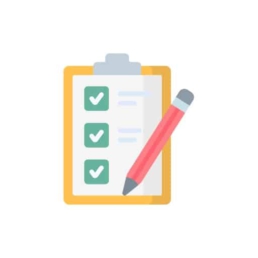
10 Different Types of Sales Pitches
A sales pitch can be customized and structured in a variety of ways, depending on the situation, the customer’s needs, and the nature of the product or service being sold. Types of business pitch examples include the following, the most common being the classic elevator pitch.
-
- Elevator Pitch: The elevator pitch is a concise, compelling introduction that can be delivered in the time it takes to ride an elevator – about 30 to 60 seconds. The perfect elevator pitch will pique the interest of potential customers, partners, or investors with a succinct summary of what your product or service does and why it's unique.
- The 'Question' Pitch: This sales pitch begins with a thought-provoking question designed to engage the customer and encourage dialogue.
- Product Demonstration Pitch: This is a visual presentation where the salesperson shows the customer how the product or service works and how it can benefit them.
- The 'Value Proposition' Pitch: This sales pitch focuses on the unique value that a product or service can deliver to the customers, emphasizing how the offering is superior to competing solutions.
- The 'Problem-Solution' Pitch: This pitch begins by identifying a problem that the customer is facing, then presenting the product or service as the ideal solution.
- The 'Storytelling' Pitch: This approach uses a compelling narrative or anecdote to engage the customer emotionally. The story often involves a satisfied customer or describes how the product was developed to meet a particular need.
- The 'Comparison' Pitch: This sales pitch involves comparing your product or service to that of a competitor, highlighting where your offering excels.
- The 'Consultative' Pitch: This type of pitch involves asking questions, listening to the customer, understanding their needs, and offering solutions tailored to those needs.
- The 'Cold Call' Pitch: A cold call pitch involves making unsolicited calls to potential customers with the aim of making a sale.
- The 'Social Proof' Pitch: This pitch leverages testimonials or case studies from satisfied customers to persuade prospects.

Elements of a Successful Sales Pitch
Creating a successful sales pitch involves a combination of research, understanding your customer, and clear communication. Here are some of the key elements that make a sales pitch effective:
Understanding the Customer
Understanding your audience – their needs, desires, and pain points – allows you to tailor your pitch to emphasize how your product or service can meet their specific needs or solve their problems.
Value Proposition
Clearly articulate what makes your product or service unique and why it’s superior to other alternatives, including benefits that the customer will receive.
Credibility and Trust
Establish credibility through facts, testimonials, case studies, or endorsements. Customers are more likely to buy from you if you can establish credibility.
Structure and Clarity
A good sales pitch is well organized and easy to understand, and should be free of jargon or overly complex language.
Engagement
Engaging the listener could be through telling a compelling story, asking insightful questions, or using humor or other emotional appeals.
Solution-oriented
Highlight how your product or service solves a problem the customer is facing so the customer is more likely to see its value.
Call to Action
Ending a sales pitch with a clear CTA tells the customer exactly what you want them to do next, whether that’s to make a purchase, schedule a follow-up call, or sign up for a trial.
Conciseness
Respect your audience’s time and keep their attention by keeping your sales pitch concise and to the point.
Preparation
Practice your pitch until it becomes natural. The more comfortable you are delivering your pitch, the more confidence you’ll project, which can be persuasive in its own right.
Follow-up
Having a plan for following up after the pitch keeps the conversation going and allows you to address any questions or concerns that might arise after the pitch.
What NOT to Say in a Sales Pitch
While some sales buzzwords and jargon can have their place, there are certain phrases and approaches that can quickly derail a sales pitch. Here are a few things you should avoid saying in your sales pitch:
-
- “Trust me.”: Trust is earned, not given. This phrase can come off as insincere and raise suspicion. Instead, prove your trustworthiness through actions and evidence, such as testimonials or case studies.
- “This is a one-time offer.”: Unless it's true, avoid using this phrase. It can come off as high pressure or manipulative. Customers are savvy and they don't want to feel like they're being tricked into making a purchase.
- “Our product is the best.”: While it's good to show confidence in your product or service, this kind of absolute statement can seem arrogant or naive. Instead, focus on the unique benefits and value your product offers.
- “To be honest with you…”: This phrase suggests that you might not have been honest before. Honesty should be a given, not something you switch on and off.
How to Deliver a Sales Pitch
Delivering a sales pitch effectively requires a strategic approach. Begin your pitch with a captivating statement or thought-provoking question to immediately grab their attention. Maintain strong eye contact and use confident, expressive body language to convey enthusiasm and credibility. Use clear and concise language to highlight the unique value proposition of your offering. Support your points with relatable examples or stories that appeal to the emotions and experiences of your audience. Anticipate potential objections or questions and prepare thoughtful responses in advance to address them effectively.
Finally, conclude your sales pitch with a strong call-to-action, guiding your audience towards the desired next step. Remember, practice is key. The more familiar and comfortable you are with your pitch, the more convincing and persuasive you will be when delivering it. When you land that new client, don’t forget to thank them for supporting your small business.

10 Sales Pitch Examples You Can Use
Being prepared is one of the best ways to execute a successful sales pitch, so we’ve prepared this handy list of a few commonly utilized pitches which you can try out yourself in a variety of situations. When thinking about how to use this list, think about your own product or service, the needs or pain points it addresses, and how your customers use it. That will help you identify the best type of pitch and how to use it. Customize any of the following to your own situation and sales requirements, and use them as a jumping off point for your own sales pitching:
The Problem-Solution Pitch:
Identify a common problem or pain point your audience faces and present your product or service as the ideal solution. Be sure to highlight the benefits and features that address their needs.
Example: “Are you tired of spending hours manually organizing your expenses? With our innovative expense management software, you can effortlessly track, categorize, and report your expenses in minutes. Say goodbye to paperwork and hello to efficiency!”
The Competitive Advantage Pitch:
Emphasize the unique qualities or advantages your product/service has over competitors and illustrate how these advantages translate into superior results or value for the customer. Provide evidence or testimonials to support your claims.
Example: “Unlike our competitors, our fitness tracker not only monitors your heart rate and steps taken but also provides personalized workout recommendations based on your fitness level and goals. With our advanced algorithm and user-friendly interface, you’ll achieve your fitness milestones faster and smarter.”
The Storytelling Pitch:
Begin with a relatable story or anecdote that captures the audience’s attention, then connect the story to the challenges your product/service addresses. Present your offering as the resolution or transformative element.
Example: “Imagine a young professional, always running late due to a disorganized schedule. That was me until I discovered our productivity app. Now, I’m on top of my tasks, meetings, and deadlines, all thanks to a simple solution.”
The Social Proof Pitch:
Share success stories, testimonials, or case studies from satisfied customers. Highlight any industry recognition, awards, or positive reviews your product/service has received and reinforce credibility and reliability through evidence of positive experiences. Use product or service case studies to highlight how your product made the lives of your customers easier.
Example: “Hundreds of satisfied customers have experienced significant growth in their online businesses using our SEO optimization tool. Just like Sarah, who saw her website traffic triple within three months of implementing our strategies. Don’t just take our word for it, listen to our customers’ success stories.”
The ROI-focused Pitch:
Quantify the return-on-investment (ROI) your product/service can deliver, highlighting cost savings, revenue growth, or productivity gains that customers can expect.
Example: “Investing in our energy-efficient appliances can save you up to 30% on your monthly utility bills. Imagine the impact that could have on your annual expenses. Our customers have reported thousands of dollars in savings each year, making it a smart financial decision.”
The Personalized Pitch:
Tailor your pitch to the specific needs and challenges of each individual customer. Conduct research beforehand to understand their pain points and preferences and highlight how your product/service can address their unique situation.
Example: “Based on our research, we noticed that your company is struggling with customer retention. Our customer relationship management (CRM) software is specifically designed to help businesses like yours improve customer satisfaction and loyalty. Let us show you how we can address your unique challenges.”
The Fear-of-Missing-Out (FOMO) Pitch:
Create a sense of urgency or exclusivity around your product/service. Offer limited-time promotions, discounts, or bonuses to encourage immediate action and highlight any scarcity or high demand to create a fear of missing out.
Example: “Don’t miss out on the opportunity of a lifetime! For a limited time only, we’re offering an exclusive discount on our marketing software. Join the ranks of top-performing businesses who have already experienced remarkable growth and success using our platform.”
The Demonstration Pitch:
Show your product/service in action through live demos or interactive presentations, highlighting key features and benefits while addressing any potential objections. Whenever possible, encourage audience participation and engagement during the demonstration.
Example: “Imagine effortlessly brewing a perfect cup of coffee at home, just like a skilled barista. With our state-of-the-art coffee machine, you can precisely control the brewing temperature, grind size, and extraction time. Join us for a live demonstration and experience the art of coffee-making firsthand.”
The Trust-Building Pitch:
Establish credibility and trustworthiness by showcasing relevant certifications or affiliations, or share success stories from well-known clients or partners. This is also a great place to highlight any guarantees, warranties, or after-sales support to reassure customers.
Example: “As a trusted provider in the industry for over a decade, we have helped numerous businesses streamline their operations and increase profitability. Our extensive list of certifications and partnerships speaks to our commitment to quality and reliability.”
The Future Vision Pitch:
Paint a compelling vision of how your product/service can transform the customer’s future. Highlight emerging trends or industry shifts that your offering is uniquely positioned to capitalize on.
Example: “The world is rapidly moving towards renewable energy sources, and we’re leading the charge with our cutting-edge solar panel technology. Picture a future where homes and businesses can generate their own clean energy, reducing their carbon footprint and saving on electricity bills. Our solar panels, equipped with advanced efficiency and storage capabilities, are paving the way towards a sustainable and energy-independent tomorrow. Join us in shaping a greener future for generations to come.”
Remember to customize these pitches according to your specific product, service, or industry while incorporating compelling language, relevant statistics, and emotional appeal to engage your audience effectively.

Pitching Tips & Tricks
Sales pitching is an art that requires a blend of strategy, communication skills, and empathy. Here are some tips and tricks to help you excel at it:
-
- Know Your Product: Understand your product or service thoroughly. Know its features, benefits, and how it compares to the competition.
- Understand Your Audience: Know who you're selling to. Understand their needs, wants, pain points, and motivations.
- Create a Connection: Build rapport with your audience. Show genuine interest in them and their needs.
- Focus on Benefits: Don't just list the features of your product or service. Explain how those features translate into benefits for the customer such as solving their problems or enhancing their life.
- Utilize Storytelling: Storytelling can make your pitch more engaging and memorable.
- Handle Objections: Be prepared for potential objections and have responses ready.
- Show, Don't Just Tell: Whenever possible, demonstrate your product or service in action.
- Use Social Proof: Testimonials, case studies, and reviews can add credibility to your pitch.
- Keep it Simple and Clear: Keep your language simple and straightforward to ensure your audience understands your pitch.
- End with a Strong Call to Action: Make sure it's clear what you want your audience to do next, whether it's to make a purchase, schedule a demo, or another step.

Creating Customer-Centric Pitches Built for Success
Crafting a compelling sales pitch requires a customer-centric approach that offers genuine value and addresses real problems. By understanding the different types of sales pitches and incorporating key elements of success, such as effective delivery and personalized content, you can create impactful pitches that resonate with your target audience.
Remember that the art of sales pitching is an ongoing process of learning, experimentation, and adaptation to the ever-changing sales landscape. By continuously honing your skills and staying attuned to customer needs, you can maximize your chances of success and achieve your sales objectives. As you hone your sales pitch skills, remember to handle any rejection from potential clients in a calm and professional manner.
If you liked this article, make sure to check out our companion article on making the perfect elevator pitch, and get strategies for selling to potential customers fast when time is limited, say, to the length of an elevator ride…
With LinkedPhone on your side, it’s easy to stay connected to your customers and keep the conversations going. Sign up for a free 7-day trial of LinkedPhone today!
Business Growth Toolkit
Get the latest thought leadership insights on growing your business plus occasional LinkedPhone updates. We respect your inbox!
Small Business Resources
A special high five to Faith Dickens for her outstanding research and contributions to this article. We love working with and supporting like-minded entrepreneurs. Thank you Faith! ❤️
Get In Touch
We would love to hear from you.
Please contact us at any time with questions or feedback.









